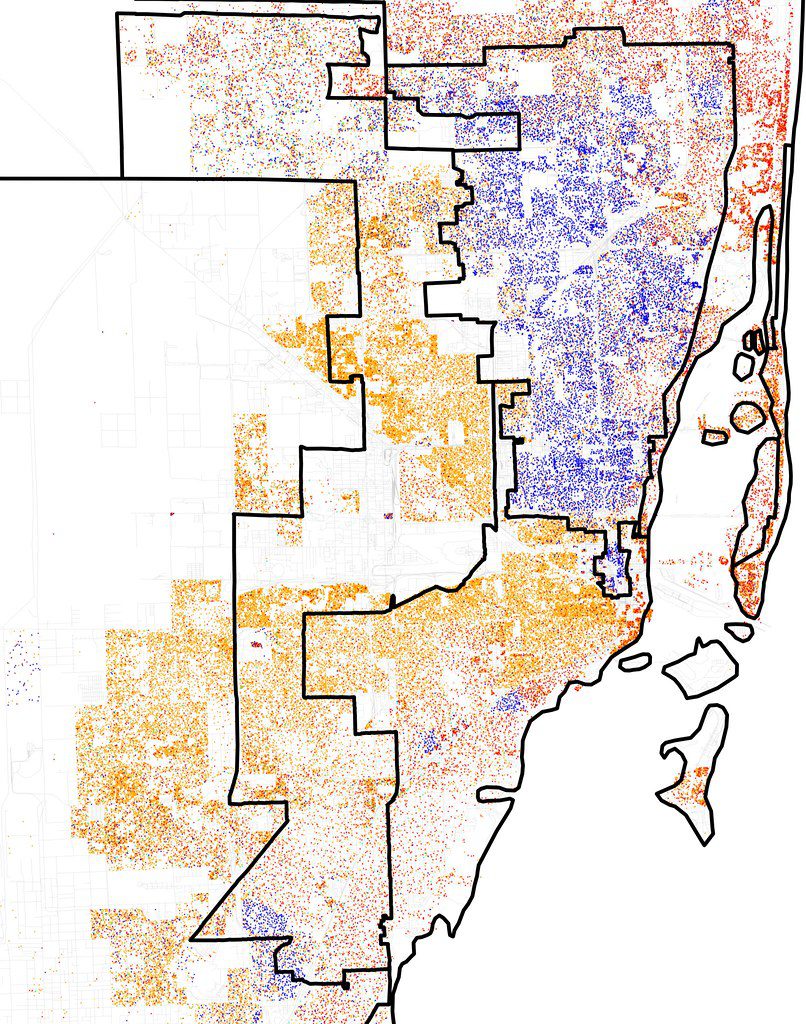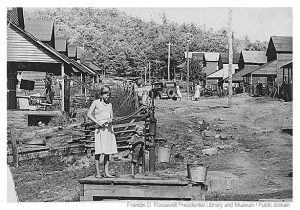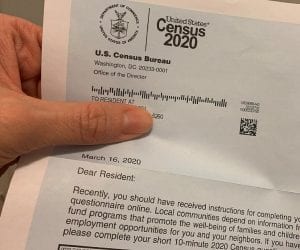The decennial census is a short survey that every household in the United States must complete once every ten years. Once the survey is mailed back to the government most people will not think about the census until the next one arrives – they have completed their civic duty for the decade! The truth is, completing the census survey will have wide-ranging effects on the government and the people living in the U.S. for years to come. Ultimately, the census is a way to gather vast amounts of data that shape hundreds, if not thousands, of decisions in the government and beyond.
Creating Voting Districts
The very first implication of the census is congressional apportionment – how many representatives each state will have for the next ten years. When the Federal Government processes the final survey, officials use the new data to map out which states have the largest populations. Since the number of representatives is fixed at 435, states that are growing at a slower rate, or shrinking, will lose representatives, and states that are growing at a faster rate will gain representatives. For example, California, Illinois, Michigan, Ohio, Pennsylvania, New York, and West Virginia lost one representative following the 2020 census, while Montana, Colorado, Oregon, Florida and North Carolina gained one. Texas, the fastest-growing state in the U.S., gained two representatives. The number of representatives a state has will not only bolster its clout in the legislative process but also give it additional power in the electoral college, which can affect the outcome of presidential elections.

Miami congressional district boundaries 2012
The State Role in Redistricting
Once the Federal Government divvies up the 435 seats in the House of Representatives, the states themselves take on the challenge of drawing districts for both their federal representatives, who will represent their constituents in Washington, D.C., as well as their state representatives, who will work in each the state capitol to create more localized laws. Since each district needs to have a somewhat equal population at both the state and federal level, creating these districts can be a challenging and controversial process that is often co-opted by partisan gerrymandering. The census data is even used to create local districts and inform decisions around a city’s school boundaries.
The Census Means Money
Census data is the basis for deciding where taxpayer money – nearly $690 billion – is allocated. Over one hundred government programs including Medicare, Head Start, Supplemental Nutrition Assistance Program (SNAP), and Pell grants use this data to know how much money they will require for the next ten years. These decisions impact millions of people around the country, many of whom are classified as low-income, or vulnerable. States also receive direct funding based on their population, which ends up in local communities. Funding for highways, schools, and local agencies makes its way from your census survey results all the way to your neighborhood. This means that completing your census is one of the easiest ways to support your community.
Planning for the Future in Public and Private Sectors
Whether they work for the government or a private company, decision-makers need the most accurate data to plan for the future. Since nearly everyone in the country fills out the survey, the census is one of the most accurate data sets available and is completely open to the public. Government officials use the data to see large demographic shifts and plan accordingly. For example, if the census data shows that the population is getting older because people are choosing to have fewer children, they might decide to increase the number of immigrants allowed into the country. If a state sees that its population of young people is increasing significantly, it may want to set aside funding to hire additional teachers so that classroom sizes do not increase.
 The private sector also pays close attention to census data. Decisions about where to place a new store location, or how to best serve their customer base, are made based on the decennial census results. Private companies often use consumer activity – like which web pages their customers visit, or Instagram ads they click – to make educated guesses about consumer wants and needs. But census data paints a much more accurate picture because people answer the questions directly. Census data shows specific trends that are vital to private companies. For example, perhaps the data showed a strong trend that households with annual income between $200,000 and $250,000 with a young child are relocating to the suburbs of Austin, TX. While that information may not matter much to you and me, the owner of a high-end infant clothing store would certainly be interested when making a decision about where to place her first brick-and-mortar store.
The private sector also pays close attention to census data. Decisions about where to place a new store location, or how to best serve their customer base, are made based on the decennial census results. Private companies often use consumer activity – like which web pages their customers visit, or Instagram ads they click – to make educated guesses about consumer wants and needs. But census data paints a much more accurate picture because people answer the questions directly. Census data shows specific trends that are vital to private companies. For example, perhaps the data showed a strong trend that households with annual income between $200,000 and $250,000 with a young child are relocating to the suburbs of Austin, TX. While that information may not matter much to you and me, the owner of a high-end infant clothing store would certainly be interested when making a decision about where to place her first brick-and-mortar store.
Quality Matters
With all of these decisions to be made, some people may wonder why we don’t take a census every year – that would provide us with the most up-to-date data imaginable. However, it takes a tremendous amount of resources and money (roughly $15.6 billion!) to produce the decennial census. In fact, teams of government employees spend years planning the best way to count every person in the United States, then process and analyze that data. Once they finish, it’s time to begin planning for the next one.
Image credits: Miami redistricting (Miami congressional district boundaries 2012 by melnikas1 is licensed under CC BY-SA 2.0); Money (Michael Longmire on Unsplash); Planning (Leon on Unsplash)





